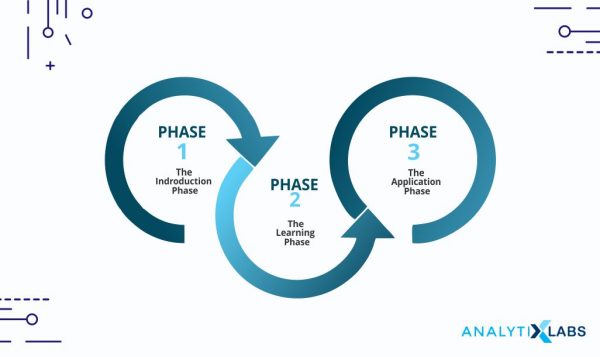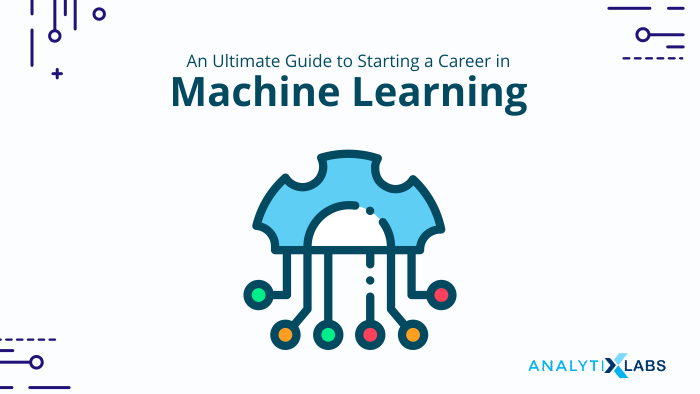If there’s a right time to switch to a career in machine learning, it is now. This is not a hypothesis or a gimmick to lure you into something glamorous. This is a fact that has been creating quite a buzz among the IT professionals of today in the last couple of years. To throw in some numbers, there are over 78,000 opportunities awaiting qualified machine learning specialists in India alone.
LinkedIn, which has been immensely resourceful in helping aspirants connect with influencers and companies, has revealed that there are more than 1800 vacancies available for experts. If that is not enough, there are approximately 9.8 times more machine learning specialists working in diverse industries today than was the scenario in 2013.
All these statistics and numbers point to just one inference – this is the ideal time to make a lucrative career out of machine learning.
Before that, however, we need to accept the fact that it’s not going to be easy. Career transitioning involves determination, an undying spirit to make it big, loads of technical skills and a perpetual curiosity.
With that said, it’s our word that we would make the transition as seamless and easy as possible. This entire write up is aimed at giving you all the details you need to shift from your current career to one in machine learning.

But Why Is Machine Learning So Popular?
It’s simple psychology.
We as humans have always wanted to chill and find simpler ways to complete our work. Looking back, we did not have the skills or technology to come up with devices capable of handling complex tasks. The industrial revolution and conveyor belts were results of such aspirations. Today though, we have all the essential ingredients to make devices learn from the data we feed and learn more things autonomously.
Automation is the right word we would like to use here. If you remember, there were massive layoffs occurring across the biggest market player companies in India. Pink slips, demotions and retrenchment were an everyday affair and thousands of IT professionals lost their jobs in the pretext of having redundant skill sets.
Though automation was blamed for taking away thousands of jobs and careers, only a few influencers identified the number of vacancies and opportunities automation was able to come up with. The job market has always been volatile and there have been tremendous shifts in job roles. Hundreds of profiles have popped up and gone extinct. If you remember, experts who had knowledge of spreadsheets and Tally were revered a couple of decades back. Did that mean Excel snatched opportunities away from the working class? It’s a big no!
With thousands of companies – both startups and giants – reinvesting their funding on disruptive technologies like data science, artificial intelligence and machine learning, switching now would only secure your job for the coming decade.
So, if you are still wondering if machine learning is the right career path for you, it is. And how do you go about achieving it?
Read on.
To make the transition easier to understand, let’s divide our approach to starting a career in machine learning into three aspects:
The Introduction Phase
The Learning Phase
The Application Phase

The Introduction Phase
This is the phase where most people get stuck at. With borrowed opinions and half-baked information, tons of misconceptions arise in the minds of aspirants. It is in this phase that we make ourselves clear of what the technology is and try to stay away from technical jargons as much as possible. That is why, you need to read books, follow influencers and stay updated with blogs on machine learning. To get started, follow these:
Books
Programming Collective Intelligence
Before even machine learning and artificial intelligence technologies attained cult status, this book got published and made a mark. Ask any data scientist or a machine learning influencer about the top five books he or she has read and you would find Programming Collective Intelligence in the list. This book covers concepts that are relevant today and gradually inducts readers into the world of machines, artificial intelligence, algorithms and more. You would get an introduction to filtering techniques, clustering, support vector systems, Bayesian filtering and more.
Machine Learning
For a deeper dive into the world of machine learning, here’s the book by Tom M. Mitchell. What makes this book stand out is the case studies used by the author along with introductions to machine learning theorems and pseudocode summaries of algorithms.
Blogs
To directly read from industry experts and understand their perspectives, experiences and encounters in machine learning, here is a list of blogs that you should follow.
Machine Learning Mastery
MIT News on Artificial Intelligence
TOPBOTS
Google Research Blog
The Learning Phase
This is where you start becoming serious about your aspiration and get hands-on with what you learn on books and blogs. You will also sharpen the essential skills you would require to join the industry and ensure your career transition smooth. So, let’s get started with the first skill.
Statistics
Machine learning relies immensely on statistics and all of its concepts, especially Bayesian probability. Machine learning algorithms are built on probabilities and statistics-driven concepts and you need to have proper exposure to statistics to get started with a career in machine learning. If you have studied the subject in your school, you can still brush up the fundamentals. There are tons of websites online that can teach you both inferential and differential statistics for free.
Programming Skills
Though not completely mandatory, having programming skills helps in making the career shift fast and seamless. Generally, programmers have an edge over their non-IT counterparts as they tend to understand coding concepts fast and innovate on multiple aspects. If you have zero exposure to coding, you might want to start off with the basic programming languages. And if you come from an IT background, there are two machine learning-centric programming languages you should have knowledge on (at least one) – R and Python.
Python and R are two of the most commonly used programming languages in the world. Companies prefer hiring experts with exposure to R and Python as they offer a blend of machine learning and analytics. Analytics is an integral part of machine learning and these two tools are the friendliest in these terms.
Machine Learning Courses
Machine learning courses are inevitable aspects of your journey into becoming a machine learning specialist. Though there are multiple websites that offer you courses and materials to learning machine learning online (for free), you need something that would establish credibility for your name and aspiration – certification. Machine learning courses offer specialization certificates and are niche in their own ways. You get to sustain your interests with the course, work on capstone projects, build your portfolio, learn from faculty and even get placement or internship assistance. This is what makes your learning curve sharp and we recommend you to not miss on this step.
Besides, machine learning courses also take you on a path of gradual progress where you start from scratch and move to complex concepts like supervised learning, unsupervised learning and more.

The Application Phase
Certifications would help be credible among recruiters but there are thousands of aspirants like you in the market with a certificate. To stand out from the crowd, what you need is an effective portfolio and hands-on exposure of your knowledge. While some courses offer capstone projects to work on, others expect you to build your own portfolios.
By portfolio, we mean projects on machine learning and its allied concepts you work on. From collaborating with companies for short-term projects and internships to the ones you take up on your interest, you need to have a substantial portfolio to show how serious you are and how much you have worked for your career.
Besides, working on your portfolio also gives you a glimpse and understanding of your everyday job as a machine learning expert and some of the episodes you are most likely to encounter during the day.
To build an ideal portfolio, you need data-sets to work on and Kaggle is one of the best repositories of data sets. Besides, it also acts as a forum and a platform where hackathons and contests are conducted frequently. Though you don’t have to win prizes, ensure you learn along the way from the diversity of competitions that it brings to you. While building your portfolio, you would also stumble upon your specific areas of interest that you can further specialize on. The more refined you are in your skill sets, the more employable you become.
These three phases might sound simple on paper but it’s a journey and what an exciting one. If there’s an industry that’s offering the perfect work-life balance, lucrative paychecks and steady career growth, it is bound to be demanding. And these are what shape not just your career but you as a professional as well.
Also, you can always get in touch with us if you are stuck at progressing in your machine learning ambitions and we would help you out. Drop in your questions on the comments and here’s to your successful career!









2 Comments
Inspirational, I am feeling motivated and now work harder to start the career in Machine Learning, hope will get similar success. Thanks for sharing your Machine Learning experience
Hello,
Greetings of the day
First of all, I would like you to thank you so much for giving us such information about this Technology. Few years back Machine Learning was new for everyone but nowadays people are aware of this technology.2 months back I have submitted my project which was related to Machine Learning but it was not as good as it should be. Now in my next project, I will also share a lot about Machine Learning with the help of your mindblowing Article.